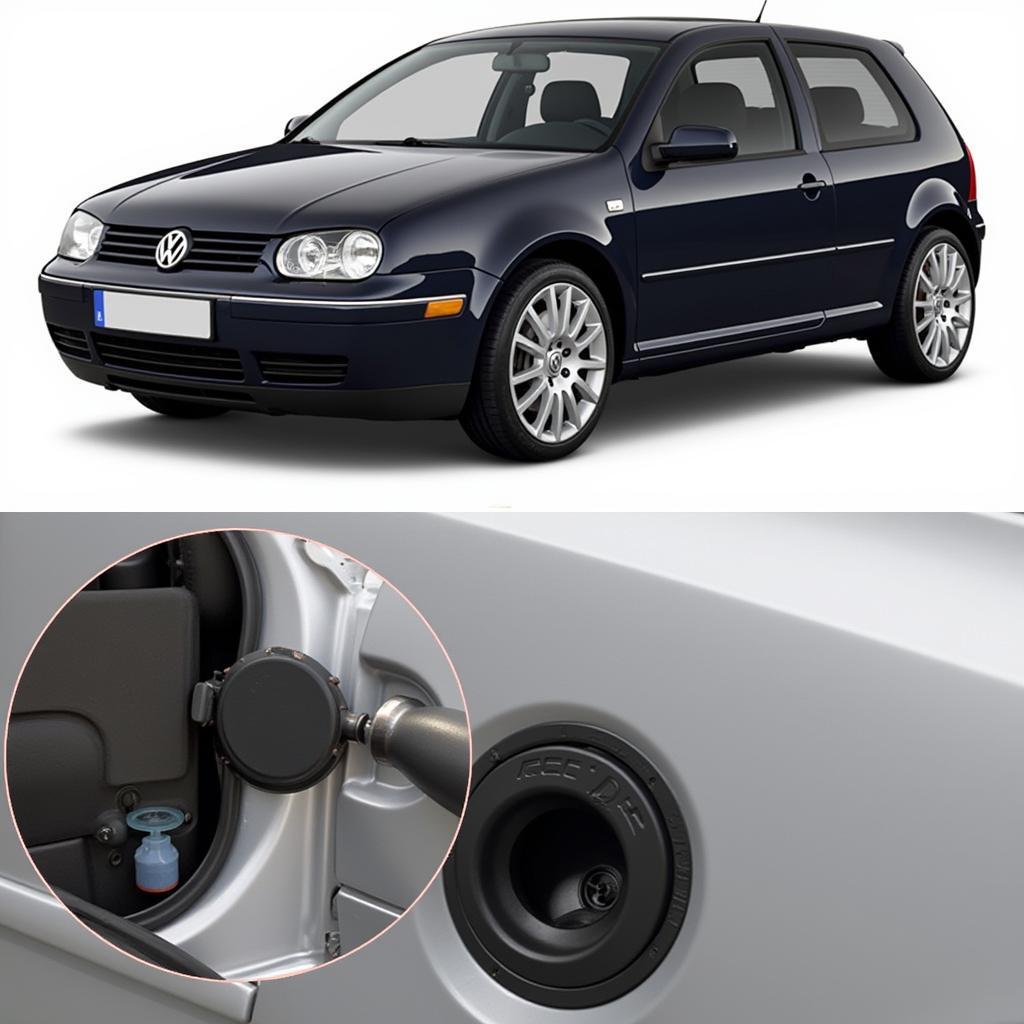A glowing brake warning light on your 1965 Ford Mustang’s dashboard can be a nerve-wracking experience, especially if you’re unsure of the cause. While it could signal a minor issue, it’s crucial to address any brake problem immediately to ensure your safety and the well-being of your classic car. This comprehensive guide delves into the common reasons behind a 1965 Mustang brake warning and provides practical solutions to help you get back on the road with confidence.
Understanding Your 1965 Mustang’s Brake System
Before diving into troubleshooting, familiarizing yourself with your Mustang’s braking system is essential. The 1965 models typically feature a four-wheel hydraulic drum brake system, meaning hydraulic pressure activates the brakes on all four wheels. Key components include the master cylinder, wheel cylinders, brake drums, brake shoes, and the brake fluid lines connecting them.
Common Causes of a 1965 Mustang Brake Warning Light
Several factors can trigger the brake warning light in your classic Mustang. Here’s a breakdown of the most common culprits:
1. Low Brake Fluid Level
The most common culprit behind a brake warning light is a low brake fluid level. This usually indicates a leak within the system, potentially from the master cylinder, wheel cylinders, or brake lines.
Solution: Check the brake fluid level in the master cylinder reservoir. If it’s low, thoroughly inspect the system for leaks. Address any leaks and refill the reservoir with the recommended brake fluid type, typically DOT 3 for a 1965 Mustang.
2. Worn Brake Shoes
Over time, your Mustang’s brake shoes wear down due to friction generated during braking. If they wear beyond a certain point, the brake warning light may illuminate.
Solution: Inspect the brake shoes for wear by removing the drum and examining the thickness of the friction material. If the material is worn thin or the rivets are close to the surface, it’s time for a replacement.
3. Malfunctioning Pressure Differential Valve
The pressure differential valve, also known as the proportioning valve, plays a crucial role in maintaining balanced braking between the front and rear wheels. A malfunctioning valve can trigger the brake warning light.
Solution: Have a qualified mechanic test the pressure differential valve for proper operation. If it’s faulty, replacing it with a new one is recommended.
4. Faulty Brake Light Switch
While less common, a faulty brake light switch can also illuminate the brake warning light. This switch activates the brake lights when you press the brake pedal.
Solution: Check if your brake lights are working correctly. If not, the brake light switch might be the culprit. It’s typically located near the brake pedal arm and can be replaced relatively easily.
5. Emergency Brake Engaged
Sometimes, the simplest answer is the right one. Make sure the emergency brake is fully disengaged.
Solution: Disengage the parking brake fully. If the light remains on, proceed with other troubleshooting steps.
When to Consult a Professional
While some brake issues can be tackled with basic mechanical knowledge, it’s crucial to consult a qualified mechanic for any complex repairs or if you’re uncomfortable working on your car’s brake system. Remember, brakes are critical for your safety, and professional expertise ensures a reliable and effective repair.
Maintaining Your 1965 Mustang’s Brake System
Prevention is always better than cure. Regular maintenance can help prevent brake problems and keep your 1965 Mustang stopping safely:
- Regular Fluid Checks and Changes: Check your brake fluid level regularly and have it flushed and replaced at least every two years or as recommended by your service manual.
- Inspect Brake Components: During routine maintenance, inspect the brake lines, hoses, and other components for signs of wear, cracking, or leaks.
- Listen for Unusual Noises: Pay attention to any unusual noises during braking, such as squeaking, grinding, or scraping. These sounds can indicate potential brake problems that need addressing.
Conclusion
A glowing brake warning light on your 1965 Mustang shouldn’t be ignored. By understanding the common causes and solutions outlined in this guide, you can troubleshoot the issue and take appropriate action. Remember, a well-maintained brake system is crucial for your safety and the longevity of your classic car. Regular checks, prompt repairs, and proactive maintenance will ensure your 1965 Mustang keeps stopping reliably for years to come.

